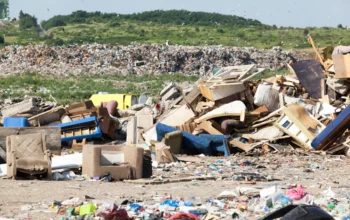Organized waste handling can transform a cluttered work site into a functional space. With the right approach, property owners can ensure safety and better presentation. Many companies trust commercial junk removal services to simplify the process while maintaining high standards. A well-structured plan saves time and prevents unnecessary disruptions.
Efficient Space Preparation
Clearing areas before work begins ensures smooth operations.
- Remove unwanted items from entry points quickly
- Organize salvageable materials into designated sections
- Dispose of unusable materials with approved handling
- Keep walkways clear to prevent access delays
- Allocate areas for temporary storage needs
Proper preparation avoids future delays and keeps the space ready for use.
Systematic Sorting Steps
Sorting items into clear categories speeds up removal tasks.
- Separate usable items for repurposing or sale
- Identify items for safe material recovery methods
- Group similar waste types for easier handling
- Keep hazardous items isolated for special disposal
- Reduce unnecessary hauling by optimizing sorting
This method reduces waste handling time and improves task coordination.
Quick Turnaround Solutions
Speed is vital for reducing downtime in active spaces.
- Schedule removal during off-peak business hours
- Coordinate with staff for smoother access
- Use pre-approved disposal routes for efficiency
- Assign specific roles to streamline labor
- Monitor progress to ensure steady workflow
These measures help projects finish sooner without compromising quality or safety.
Is On-Site Storage Necessary?
Sometimes. On-site storage can be useful for large projects with phased removal. However, if space is limited, arranging direct transport to disposal or recycling sites is more practical. The decision depends on property layout and overall project size.
Specialized Large-Scale Projects
Big projects demand more planning and stronger coordination.
- Assign dedicated teams for specific waste types
- Use larger containers for bulk materials
- Coordinate multiple trips to avoid delays
- Pre-arrange transport schedules for heavy loads
- Track disposal stages for accurate timelines
Structured planning ensures large-scale work stays organized from start to finish.
Consistent Communication Flow
Clear communication helps every stage progress smoothly.
- Inform all stakeholders about project timelines
- Share updates on completed removal stages
- Provide instructions for property access control
- Keep contacts available for urgent needs
- Confirm final clearance before closing tasks
Reliable communication reduces misunderstandings and keeps work moving forward.
Maximizing Site Safety Standards
Applying safety-focused measures ensures risk is minimized.
- Clearly mark all restricted access areas
- Use approved tools for moving heavy loads
- Keep fire exits clear at all times
- Prevent overloading disposal units beyond limits
- Check site conditions before work begins daily
A safety-first mindset builds trust and promotes professional standards.
Enhancing Overall Property Appeal
Well-managed junk removal improves how spaces are perceived. The right process leaves commercial areas clean, open, and ready for productive use. With proper planning, commercial junk removal contributes to both functional and visual upgrades that benefit every visitor and occupant.




